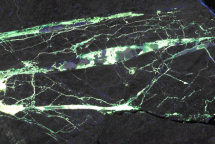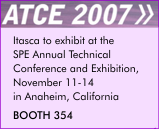Literature by HCItasca personnel recently published or acquired in the HCItasca library.
Brummer, R. K, C. P. O'Connor, G. Swan, D. Counter and N. Disley. "Modelling the Caving of Stope Backs Under High Stress Conditions: A Case Study of Prediction and Field Trials," in Rock Mechanics: Meeting Society's Challenges and Demands (1st Canada-U.S. Rock Mechanics Symposium, Vancouver, May 2007), Vol. 2: Case Histories, pp. 1329-1335, E. Eberhardt et al., Ed. London: Taylor & Francis Group, 2007.
Corkum, A. G., and C. D. Martin. "Modelling a Mine-by Test at the Mont Terri Rock Laboratory, Switzerland," Int. J. Rock Mech. Min. Sci., 44, 846-859 (2007).
Cotesta, L., P. K. Kaiser, M. Cai and A. Vorauer. "Application of Scientific Visualization — Stress Control on Permeability Anisotropy in Moderately Fractured Rock," in Rock Mechanics: Meeting Society's Challenges and Demands (1st Canada-U.S. Rock Mechanics Symposium, Vancouver, May 2007), Vol. 2: Case Histories, pp. 1203-1212, E. Eberhardt et al., Ed. London: Taylor & Francis Group, 2007.
Hakami, H. (2007) "Propagation of Large, Twinned Fractures in Shear – A Numerical Investigation," in The Second Half Century of Rock Mechanics (11th Congress of the International Society for Rock Mechanics, Lisbon, July 2007), Vol. 1, pp. 399-402, L. Ribeiro e Sousa, C. Olalla, and N. Grossmann, Eds. London: Taylor & Francis Group.
Hudyma, M. R., and R. K. Brummer. "Seismic Monitoring in Mines – Design, Operation, Tricks and Traps," in Rock Mechanics: Meeting Society's Challenges and Demands (1st Canada-U.S. Rock Mechanics Symposium, Vancouver, May 2007), Vol. 2: Case Histories, pp. 1423-1430. E. Eberhardt et al., Ed. London: Taylor & Francis Group, 2007.
Mas Ivars, D., N. Deisman, M. Pierce and C. Fairhurst. "The Synthetic Rock Mass Approach – A Step Forward in the Characterization of Jointed Rock Masses," in The Second Half Century of Rock Mechanics (11th Congress of the International Society for Rock Mechanics, Lisbon, July 2007), Vol. 1, pp. 485-490, L. Ribeiro e Sousa, C. Olalla, and N. Grossmann, Eds. London: Taylor & Francis Group, 2007.
Pierce, M., P. Cundall, D. Potyondy and D. Mas Ivars. "A Synthetic Rock Mass Model for Jointed Rock," in Rock Mechanics: Meeting Society's Challenges and Demands (1st Canada-U.S. Rock Mechanics Symposium, Vancouver, May 2007), Vol. 1: Fundamentals, New Technologies & New Ideas, pp. 341-349, E. Eberhardt et al., Ed. London: Taylor & Francis Group, 2007.



